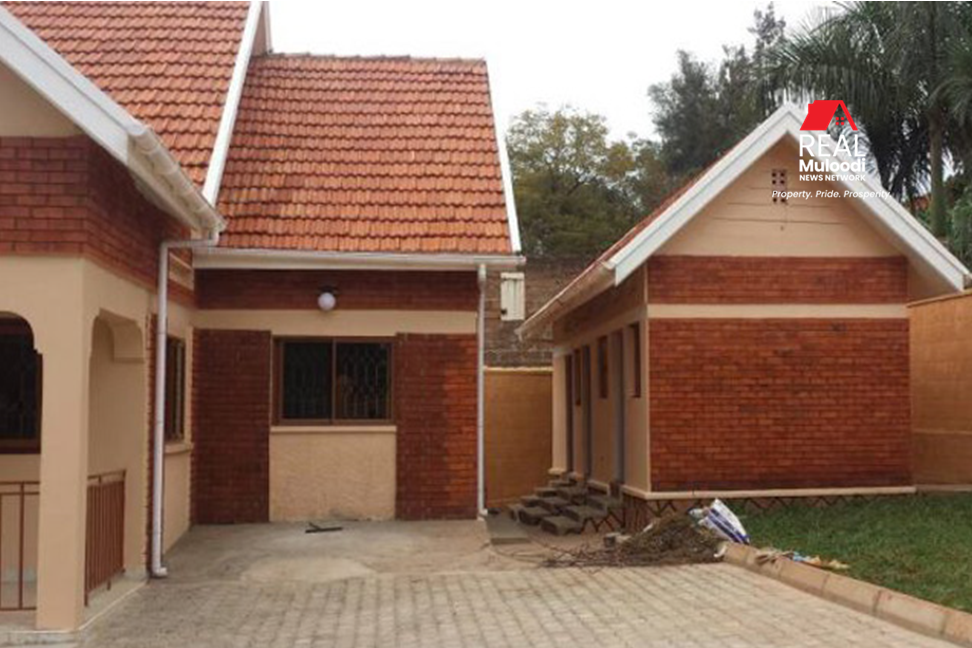UGANDA, Kampala | Real Muloodi News | In the past, a home lacking boys’ quarters was seen as a sign of a low-income household. Boys’ quarters, also known as servants’ quarters, were a common feature in house designs, particularly in Uganda, dating back to the British colonial era.
These quarters provided a physical separation between household masters and their domestic workers. However, this tradition is gradually fading away.
David Lukiiza a journalist recently asked a friend constructing his residential home in Kawanda, on the outskirts of Kampala, about his plans for boys’ quarters, he found the question rather amusing.
He explained that he hadn’t come across a modern Ugandan home with a main house and boys’ quarters in quite some time. This led David to ponder the potential challenges he may face in terms of privacy.
Nonetheless, construction experts argue that they were ideal in the 19th century, but may not be necessary in today’s context.
According to Muhammed Nsereko, an architect at 3M Designers and Construction in Kampala, in the 1990s, a home without them was considered a symbol of poverty.
However, factors such as changes in land availability and the economy have contributed to a decline in the demand for separate living quarters for household staff.
Nsereko explains that families whose incomes allowed for the employment of maids, gardeners, and other helpers would build separate houses for them. This is no longer the norm.
They were also utilised as guest houses in the past. Families would often have relatives visiting for short periods, and the quarters provided accommodation for them. This construction practice fostered stronger family bonds and increased comfort.
However, Nsereko advises homeowners with redundant boys’ quarters to consider upgrading and renting them out.
Space Constraints and Changing Preferences David Kireli, an engineer at the Ministry of Education, attributes the decline in boys’ quarters to limited space.
He explains that the intense competition for space means that the money our fathers spent on purchasing three acres of land can now only secure a plot measuring 50×100 feet.
As a result, individuals choose to build larger four-bedroom houses on smaller plots. Kireli suggests that a house with four standard rooms is sufficient to accommodate a large family and one or two household staff.
By simply adding a door that leads to separate rooms and bathrooms for staff, privacy can be maintained. Some homeowners, like Peter Kiberu from Naalya, opt to hire commuting house help to maximise space.
Kiberu and his wife have a gardener and a maid who only come twice a week, enabling them to save on accommodation and food expenses.
However, Kiberu points out that his rural home still has boys’ quarters since there is enough space for a main house, quarters, and a compound.
Cathy Amuge, who works at Coca-Cola, built boys’ quarters but found them consistently vacant. She notes that most families today are smaller and require only one or two household staff. This shift in demand influences the construction of rental properties.
Amuge regrets building boys’ quarters and believes that if given the chance, she would have utilised the materials to create larger rooms instead.
Peter Iyute, a builder in Lira, observes that most houses with boys’ quarters are found in rural areas. Rural locations often have ample space, and inherited land allows for the construction of homes with gardens, which is less feasible in urban centres.
Real estate dealer David Ddungu, based in Nansana, suggests that as long as people aspire to live close to urban centres, room extensions are preferred over detached boys’ quarters.
With shrinking plots of land nearer to town, it becomes increasingly rare for small landowners to build separate quarters.
Hakeem Zziwa, a builder, explains that nowadays people prefer to save space and add more rooms through extensions rather than constructing boys’ quarters.
However, Zziwa notes that they have built mini-boys’ quarters for individuals who cannot do without them on their small plots of land, although this often means sacrificing larger rooms or compounds.
As urban areas face space constraints and economic realities shift, the once-common boys’ quarters are gradually becoming a thing of the past.
Modern housing designs and changing family dynamics prioritise space optimisation and adaptability.
The shift away from boys’ quarters reflects the evolving needs and preferences of homeowners in Uganda’s urban areas.
READ MORE LIKE THIS:



